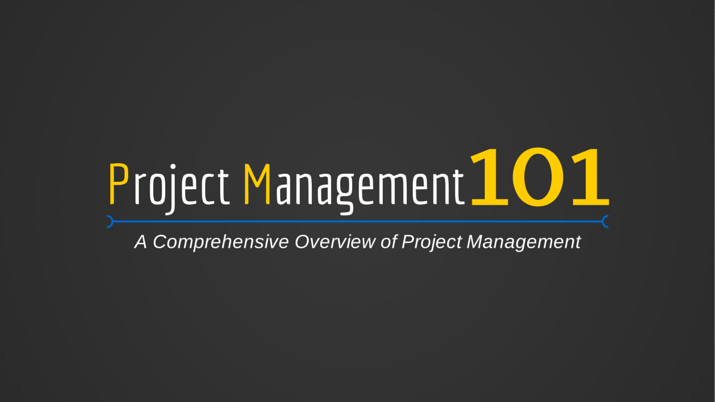Project Management 101

Last Updated March 8, 2024
Projects consist of a specific set of activities designed to achieve a particular objective. Unlike regular operations, projects have a beginning and an end, and are often executed by temporary groups. Whether the project takes a week, a month or several years before completion, it’s still considered temporary. Projects are carried out under a set of constraints, including time, cost and scope.
First, let’s look at the organization that promotes education and certification for project management professionals: the Project Management Institute, or PMI.
What is the PMI?
The PMI is a professional association for the project management profession. Since its 1969 founding, PMI has grown to more than 700,000 members. The organization advocates for project management, improves access to education and helps members enhance their careers, improve their companies’ performance and grow the project management profession.
PMI offers widely-recognized certifications, including the Project Management Professional (PMP)® certification, held by over 590,000 project managers. The organization also offers professional development opportunities, academic and market research programs and global standards for project management.
The Project Management Triangle
Because they are temporary and designed to accomplish a specific goal or set of goals, projects are typically performed and delivered under a set of constraints, illustrated in the project management triangle. Each side of the triangle represents a different constraint: time, cost or scope.
- Time: Refers to the amount of time available to complete the project.
- Cost: Every project has a specific budget, and each action costs money. Project managers must be constantly aware of their costs and remaining budget.
- Scope: This is what must be accomplished to achieve the project objectives. It is often defined as deliverables. The more project deliverables, the more time and costs required to achieve them.
Project managers balance the ratios to help achieve a successful result. However, these constraints often compete with each other. Expanding the scope of the project can tighten the schedule and could impact costs. Likewise, reducing the budget may result in a reduced ability to achieve the goals, so the scope may have to be scaled back.
The Critical Path
Another aspect of planning for a project is the critical path, which is the sequence of activities that determine the time the project will take. It helps determine how quickly a project’s objectives can be achieved. Each activity has a start and finish date, and must be completed by the deadline in order for the project to be completed on time. Project managers use the critical path to plan the project, ensure adequate resources throughout the timeline and take action if things veer off schedule.
Defining the Project Scope
In order to plan a project and establish the critical path, project managers define the project scope. Starting with the project objectives, they can establish the work and resources needed to accomplish project tasks. Defining job roles and directing the team comes next.
Here is a step-by-step approach to defining project scope:
- Identify project objectives
- Identify goals
- Split the overall project into logical sub-phases
- Define tasks that will accomplish the goals
- Identify required resources
- Establish a budget
- Produce the schedule
Establishing the Project Budget
Budgets are a means of controlling a project’s costs. Actual expenses are compared with the budget, giving the project manager the ability to gauge at any phase whether the project can be completed within budget. If not, the other sides of the triangle – scope and time – must be adjusted.
Developing a budget requires the project manager to identify each task’s associated costs. These might include labor, materials, consultant fees and travel. A detailed budget helps give the project manager an idea of how much money to allocate between resources, and it allows the manager to closely monitor costs and better supervise the project. Monitoring the budget prevents unauthorized charges or expenditures, and allows for corrective actions.
The Successful Project Manager
An example of a successful project is one that meets the schedule, is delivered within the budget and meets the objectives and expectations of stakeholders. An attribute of a successful project manager is typically someone who consistently delivers completed projects on time and on budget. Concentrating on achieving these criteria can take effort and skill, but can result in greater success for the organization.




